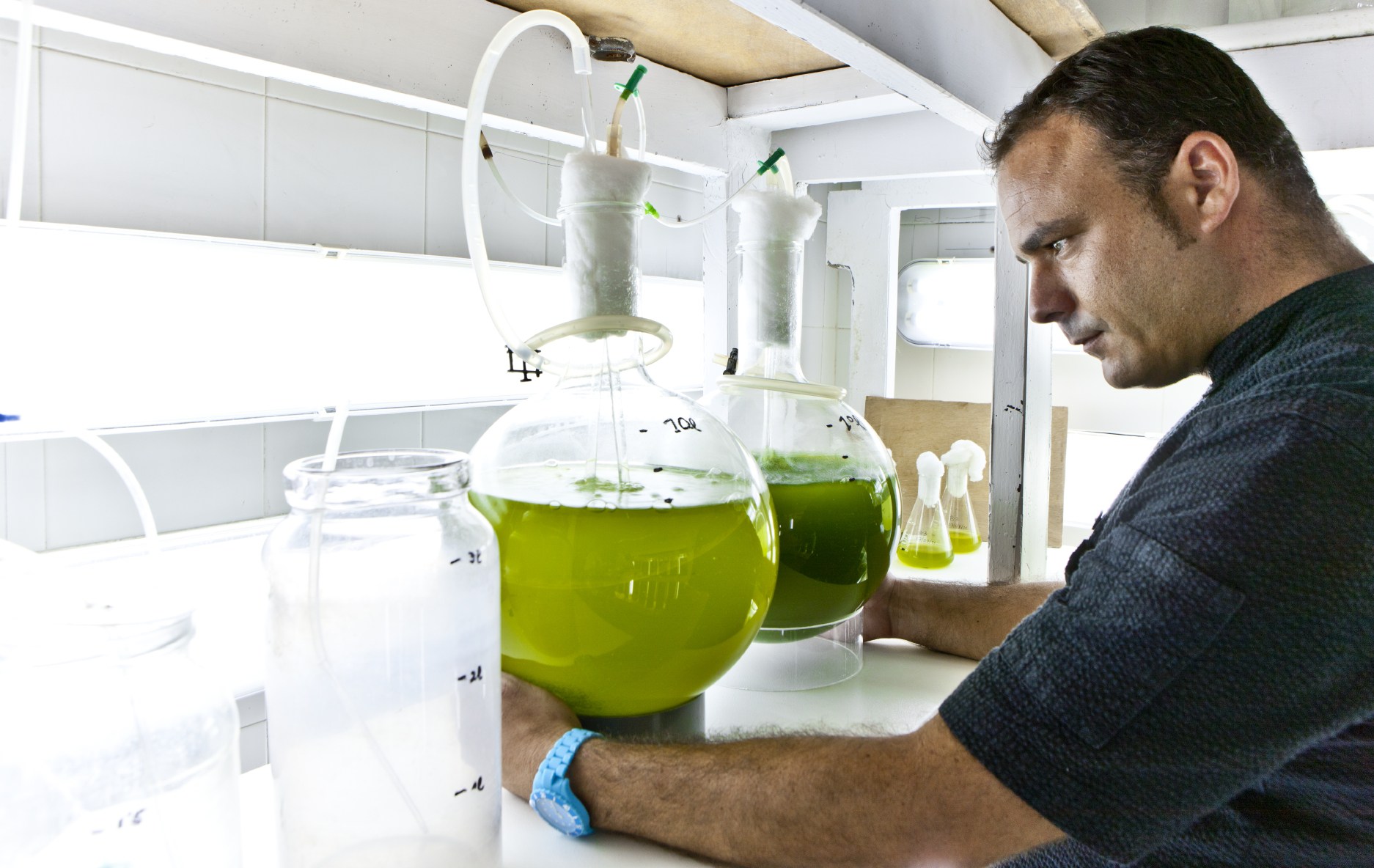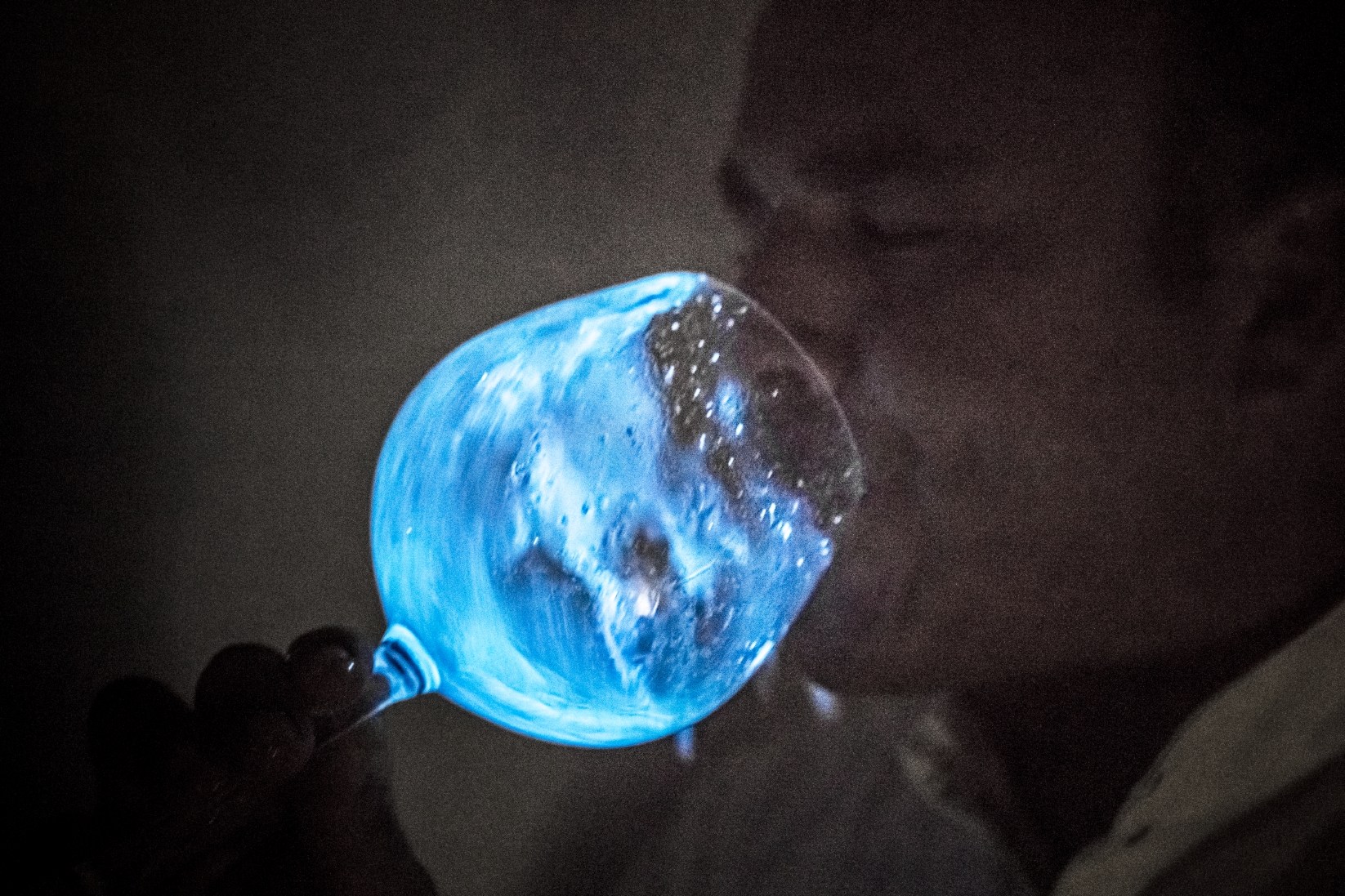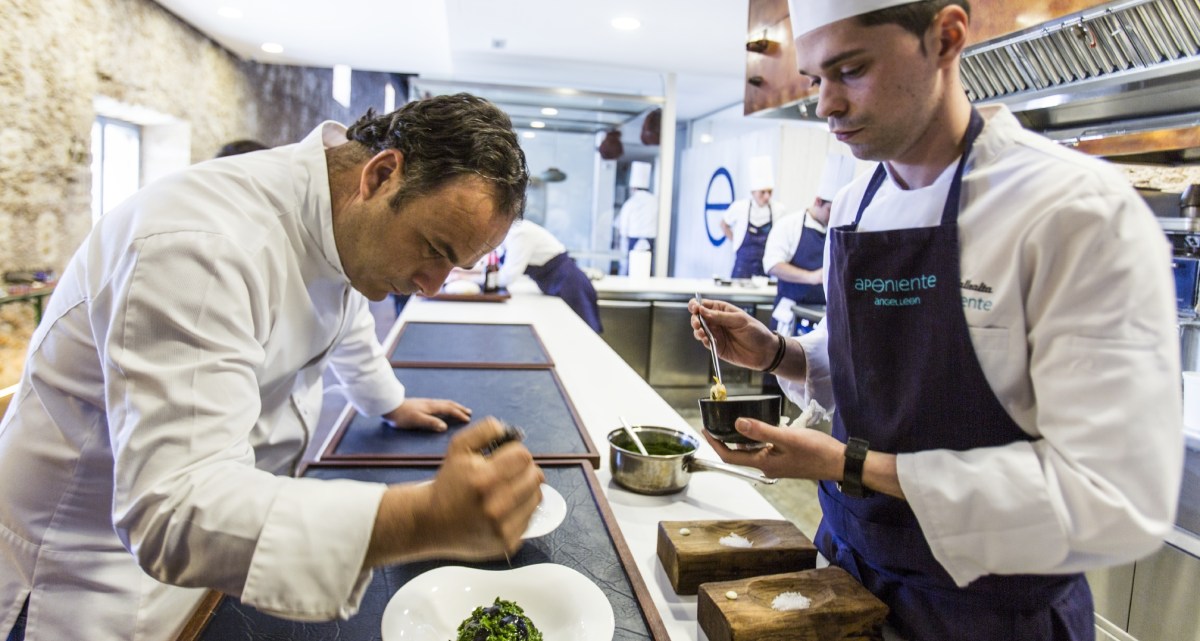I recently spoke with chef Ángel León, chef-owner of the two-Michelin-star restaurant Aponiente in El Puerto de Santa María, Cádiz, Spain, and star of the Spanish television show Chef of the Sea. At Aponiente, open mid-March to mid-December, he serves parts and types of fish that are usually discarded or ignored by other cooks, in an effort to help foster more sustainable seafood. His menus change twice a year; this season, it will include nigiri de tomaso, a thinly sliced black cardinal fish, and gazpachuelo planctónico de berberechos, a creamy soup made with plankton and cockles. They reflect his years of exploring what sea life is edible and the experimentation he has done in concert with scientists and universities in Spain, including the University of Cádiz.
Cook’s Science: Tell us about your restaurant. What was the biggest challenge when you opened almost 10 years ago?
Ángel León: [I opened Aponiente] to have a place to tell my story through the kitchen. We do more than just serve food. We had to find a way to talk about the sea in a different way.
[The very beginning] was a hard time, because nobody understood why I cooked the fish that nobody wanted to eat. People thought, This chef is serving me the fish that nobody wants, instead of serving me prawns or lobster. For many years we’ve been persisting, despite what most people wanted to be served. We’ve been lucky that people have become sensitive to our work and value what we do.
We utilize fish that are usually discarded, such as bleak, krill, Atlantic mackerel, and moray eel. Because they’re not well known, there’s no demand for them. We reinvent those fish and turn them into, for example, something similar to embutido, or cured meat.
And we’re just starting. There’s still so much to tell, to learn, to evolve. We have to continue reinventing the sea.
CS: It’s been said by visitors that your kitchen resembles a laboratory.
AL: We’re not a laboratory exactly. We’re a group of people trying to find new ingredients in the sea. Our laboratory is nature. We try to open people’s minds so they realize that in the sea, there’s a lot more to consume than what we usually think. And, of course, our team does a lot of investigation, but we’re focused on finding new ingredients.
CS: What’s a new ingredient you discovered?
AL: Marine plankton [technically called phytoplankton] for human consumption. Plankton [which adds a marine saltiness and silkiness to León’s dishes, such as risotto] is one of the principal ingredients at Aponiente, and one of the projects I’m most proud of. To turn plankton into an ingredient that people could consume, we worked hand in hand with the company Fitoplancton Marino, which grows marine microalgae [for the purpose of aquaculture and cosmetics, as well as human nutrition]. They have a spectacular laboratory. The plankton just needs light, water, and the right temperature for photosynthesis. Plankton has 50 times more omega-3s than olive oil. It’s a product with a lot of natural properties unique in the world.

CS: What interested you in bioluminescence, which is also part of your work with plankton?
AL: I saw the light when I went fishing at night. I thought it was beautiful and wanted to tell the world about it, so that people could see the same light that I saw and know that nature still has the capacity to surprise us in the 21st century.
We’ve turned into reality the dream of eating light through plankton. The plankton produces light; [we combine it with] crab that we’ve dried. When we mix them with water or a broth, we get the sea light. The most important and difficult part was to create a dry product that still makes light. We’re going to start using it [at Aponiente] this season.

CS: You also partnered with three Spanish universities to study how different fishing methods can affect the texture and flavor of fish. What did you find out?
AL: We studied how the texture of the fish was affected by the way we caught it and how it died. We looked at three fishing methods: anzuelo (with a fish hook), palangre (longline), and red (net). Fish is water. Fish that’s caught with a hook and killed in frozen water, ice, or snow is the best fish to cook. The more water the fish loses, the less interesting it is in the kitchen. If the fish dies from a cold shock, it creates the most interesting texture. With a net, a lot of time passes between when the fish dies and when you freeze it. Unfortunately, there’s less hook fishing, which is the most sustainable fishing because you collect the fish one by one.
CS: You’ve said there’s still a lot you need to learn about the sea. What do you hope to learn?
AL: Everything. We only consume 25 percent of the biomass in the sea. That explains how much I still have to learn and discover, and then serve on a plate.
This interview was conducted in Spanish and has been edited and condensed.
Photography by Alvaro Fernandez-Prieto courtesy of Ángel León.





